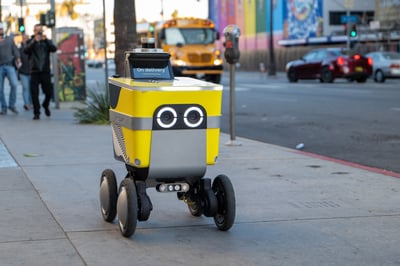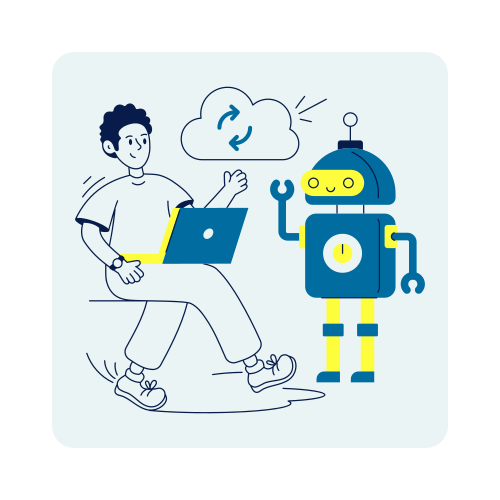The Top 7 Technology Trends for 2022 We’re Betting On
2021 proved to be a turbulent year for a variety of reasons. Even though technology continues to evolve at a blistering pace, it’s evident that some trends have picked up steam due to their ability to help enterprises navigate the challenges of the current global climate.
To help enterprises keep a pulse on what’s coming and how it can help them drive growth and their digital transformations forward, these are the top 7 technology trends for 2022 that we’re putting our money on.
1. Hyperautomation
To respond to the challenges the pandemic produced across industries, organizations turned to automation with more fervor than ever. The gains companies have made by automating business processes in the trying times of a global pandemic will lead to more investment in automation, with an eye on automating more complex, end-to-end processes for even greater returns in efficiency, quality, and cost savings.
Hyperautomation will continue its ascent in 2022 as RPA programs invest more in their automation toolchains with process discovery tools like task capture to accelerate their automation pipelines. There will also be increased application of artificial intelligence and machine learning to move beyond automating rules-based tasks and onto the next generation of automation: automating complete, decision-based business tasks and processes.
2. Artificial Intelligence (AI) and Machine Learning (ML)
It seems these technologies always maintain their presence on these lists, and for good reason. While organizations continue to get their feet wet with artificial intelligence and machine learning, AI and ML have historically remained in the experimental pilot stage. However, every year, their application becomes increasingly more accessible and stable.
Hyperautomation, artificial intelligence, and machine learning are intrinsically connected. As companies look to automate more complex and as many processes and tasks as possible, AI and ML will play a much more significant role in every organization’s hyperautomation efforts. However, their application won’t be limited to only automation.
3. Cloud Computing
Legacy modernization as part of larger digital transformations continues to grind on. A vital component of those efforts is moving from on-premises applications to cloud-native ones.
As cybersecurity improves, cloud computing becomes increasingly attractive because it reduces maintenance and support efforts, increases agility, and makes enterprise architecture more resilient, contributing to successful digital transformations.
4. No-Code/Lo-Code
All consumers now expect a digital-first experience. To keep pace with customer expectations, lo-code/no-code is democratizing application, service, and integration development, enabling more users to deliver digital services and experiences faster than ever. Expect no-code/lo-code development to increase not just in 2022 but for many years to come.
5. Physical Automation
The pandemic has impacted all industries. Task and process automation has enabled many organizations to address the glaring gaps, surges, and challenges the last couple of years have brought, but certain verticals like the service industry have a unique set of new obstacles. They are confronted with employee shortages.
To contend with this, companies are aggressively adopting physical automation and robotic workers to fill employee shortages. Perhaps you’ve already seen robot deliverers roaming the streets of the city you live in. This trend will only continue and grow.

6. Nanotechnology
Staying on the theme of robotics, nanotechnology is another trend that promises to become more mainstream in 2022. Traditionally, when one thinks of nanotechnology, the perception is that its application is limited to the medical field. While the medical industry is a big adopter, nanotech is also being used to improve manufacturing, utilities, and consumer products, cementing it as a significant trend that is still in its ascent.
7. Remote Work
Another trend born out of the pandemic that seems like it’s here to stay is remote work. Employees everywhere have gotten used to the comforts of working from home and the increased work-life balance it provides.
Prospective employees are now looking for purely remote jobs in droves, outlining it as one of their main criteria, and employers are yielding to this requirement. Organizations are increasingly offering hybrid models or all-out remote positions to match employee demands and to leverage the improved employee experience and productivity it produces.
2022 will see more companies adopting a remote workforce model, with an extra emphasis on managing a disparate workforce that is connected digitally. It’s one of the reasons HR is looking to automation to help them do that.
Technology never slows down. If we’ve witnessed anything in the last couple of years, it’s that even in the face of turbulence and uncertainty, technology trudges forward with even greater force as a vehicle to overcome those challenges. We suspect that 2022 will only be a testament to that.
For more insightful resources on automation and beyond, check out our resource library, where you’ll find all our on-demand webinars, whitepapers, and more!
Share this
Recent Stories

7 Technology Trends for 2021 That We’re Putting Our Money On

6 Technology Trends to Watch in 2024

